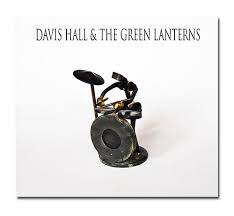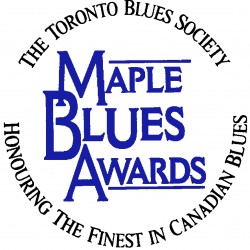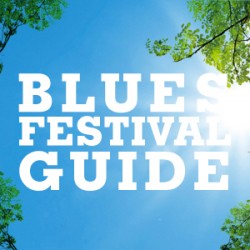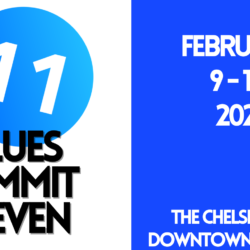Davis Hall & The Green Lanterns
This is one of those albums that pushes the boundary of Blues in ways most people could never imagine. I am sure some blues purists would say that it is not blues, but if you listen closely you can hear blues undertones throughout every cut on this CD.
The product of “Dark Orchard” mastermind and Downchild drummer, Jim Casson, Davis Hall and the Green Lanterns is not so much a collection of blues songs, as an exploration of the unexpected places that blues can go.
This album asks what happens if Dark Orchard took their uniquely ambient sound and applied it to tinge a blues idea. Add in Jim’s experimental percussion, sampling and loops to create something completely different, and yes enticingly familiar.
One of the great pleasures of Music is Experimenting with new ideas, new sounds and sharing those with likeminded people. This project was pieced together through a series of other projects that bought guitar, bass and even tuba into play. Authored and created by a group of friends socially distanced but musically connected.
A Monument to musical creation through exploration, every song on this album draws its name from a place somewhere in the Niagara region. Even the band name does that. “Davis Hall” was a Community Centre near where Jim went to nursery school while the “Green Lantern” was a soda shop.
The album opens with “Temperanceville”, lively with a cool New Orleans groove, it features brilliant interplay between tuba (Jay Burr) and guitar (Wayne DeAdder) with some sweet slide (Mike Branton). The second cut is the fun and funky “Marshville Station”, this time with a new lineup including Russ Boswell (bass), Bernie LeBarge (guitar) and Brent Barkman (organ). The music brilliantly mimics the hustle and bustle of a downtown station as people scurry from home to work to home, heads down never noticing the people around them. Not necessarily constant motion, more the flow of humanity in closed circumstance.
Up next, “The Right Road To Boyle”, another feisty New Orleans offering with tuba undertones and smooth guitar over the top. I am not sure what the geographical reference is here, but it has a frantic energy that is infectious.
The fourth cut is the spooky “Finding Tintern”, which features the haunting harmonica of Steve Marriner. The echo-ish nature of the sound belies a large and expansive space, lending itself to the mystery of dark places. The fifth cut, “Gasline”, is a quirky jam, rich with funky guitar and smooth rhythm. A jittery little jump that would be well at home in a smoky New Orleans club at 2 in the morning.
Up next is “Formerly Diffin’s Corners”, which brings the dobro of Stephen Miller into the fold, and adds a trombone to the tuba and the brilliant percussion one expects from an incredible player like Jim Casson. It has a dramatic feel straight out of a 70’s cop movie feel. The seventh cut on the album is the low, slow and atmospheric “Crowland,” a swampy little tune that would go perfectly with fire flies on a hot and humid southern night.
Up next, “White Pigeon” launches you right back into the funky world of Jim’s rhythmic percussion, counter-pointed by Wayne and Mike’s guitar and slide, each playing off the other. The ninth cut is “Sulphur Springs”, probably the most atmospheric cut on the album. The only way I can describe the sampling is that it seems to cycle through sounding like wind through wires, howling wolves and singing whales. Kind of creepy, but very cool!
The album closes with the tenth and final track, “The Dream Of Chantler” brings the brilliant harmonica of Al Lerman in for what is probably the bluesiest cut on the album, fueled by the rhythm of crickets. There’s something about that sound that just speaks to the soul, and Lerman’s harp works perfectly with it.
This album is an intriguing collection of original sounds and ideas that challenges the listener and defies the idea that blues is just one thing. It’s Not! In this case, it is all things. (Terry Parsons)










